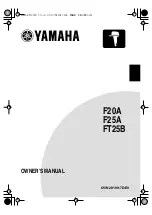
Introducing the BIOS
User’s Manual
3-25
!
A Soft-off feature that enables the operating system to power off the computer.
!
Support for multiple wake-up events (see Table 3-6-1).
!
Support for a front panel power and sleep mode switch. Table 3-6-2 describes the system states based
on how long the power switch is pressed, depending on how ACPI is configured with an ACPI-aware
operating system.
Note
If you enable the ACPI function
in the BIOS setup, the SMI switch function will not work.
System States and Power States
Under ACPI, the operating system directs all system and device power state transitions. The operating
system puts devices in and out of low-power states based on user preferences and knowledge of how
devices are being used by applications. Devices that are not being used can be turned off. The operating
system uses information from applications and user settings to put the system as a whole into a low-power
state.
The table below describes which devices or specific events can wake the computer from specific states.
Table 3-6-1: Wake Up Device and Events
These device/events can wake up the
computer……
……from this state
Power switch
Sleeping mode or power off mode
RTC alarm
Sleeping mode or power off mode
LAN
Sleeping mode or power off mode
Modem
Sleeping mode or power off mode
IR command
Sleeping mode
USB Sleeping
mode
PS/2 keyboard
Sleeping mode
PS/2 mouse
Sleeping mode
Table 3-6-2: Effect of Pressing the Power Switch
If the system is in this
state……
……and the power switch is
pressed for
……the system enters this
state
Off
Less than four seconds
Power on
On
More than four seconds
Soft off/Suspend
On
Less than four seconds
Fail safe power off
Sleep
Less than four seconds
Wake up
ACPI Suspend Type:
Two options are available: S1 (POS) or S3 (STR). The default setting is
S1 (POS)
. Generally, ACPI has
six states: System S0 state, S1 state, S2 state, S3 state, S4 state, S5 state. S1 and S3 states are described
below:
The S1 (POS) State (POS means Power On Suspend):
While the system is in the S1 sleeping state, its behavior is as described below:
Содержание KG7
Страница 2: ......
Страница 10: ...Chapter 1 KG7 Lite KG7 KG7 RAID 1 6 ...
Страница 28: ...Chapter 2 KG7 Lite KG7 KG7 RAID 2 18 ...
Страница 64: ...Chapter 3 KG7 Lite KG7 KG7 RAID 3 36 ...
Страница 78: ...6 4 Chapter 6 KG7 Lite KG7 KG7 RAID ...
Страница 84: ...A 6 Appendix A KG7 Lite KG7 KG7 RAID ...
Страница 104: ...F 4 Appendix F KG7 Lite KG7 KG7 RAID ...
















































